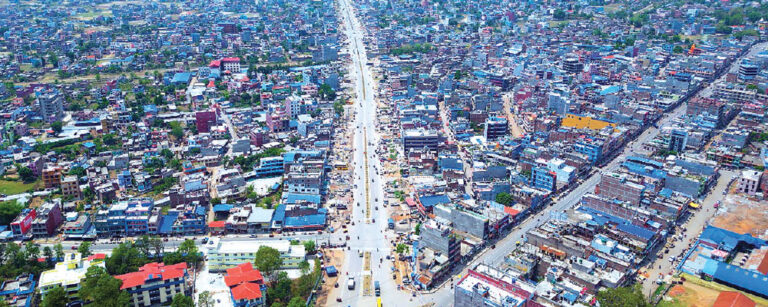Nepal’s Hidden Treasure and its Must-Visit Attractions
An In-depth Look at Dhading District
Dhading, the central gem of Nepal, is the embodiment of the country’s authentic charm, displaying a wonderful blend of rich culture, intriguing heritage, and breathtaking natural landscapes. Perched majestically, it forms a vibrant mosaic where East meets West and North greets South, with Kathmandu, Nuwakot, Makwanpur and Rasuwa on one side, and Gorkha and Chitwan on the other, while sharing a picturesque northern border with Tibet.
If you are lazy to read then watch the video about Dhading district below.
With its heart pulsating in Dhading Besi, the district’s vibrant hub, Dhading casts a wide geographical net, sprawling over diverse terrains. The district’s northern part, for instance, rises above the clouds, reaching the heights of the alpine climate zone. Here, the air is crisp and fresh, and the panoramic views of snow-dusted peaks, a part of the Ganesh Himal, provide an ethereal spectacle that imprints itself on the minds of its visitors.
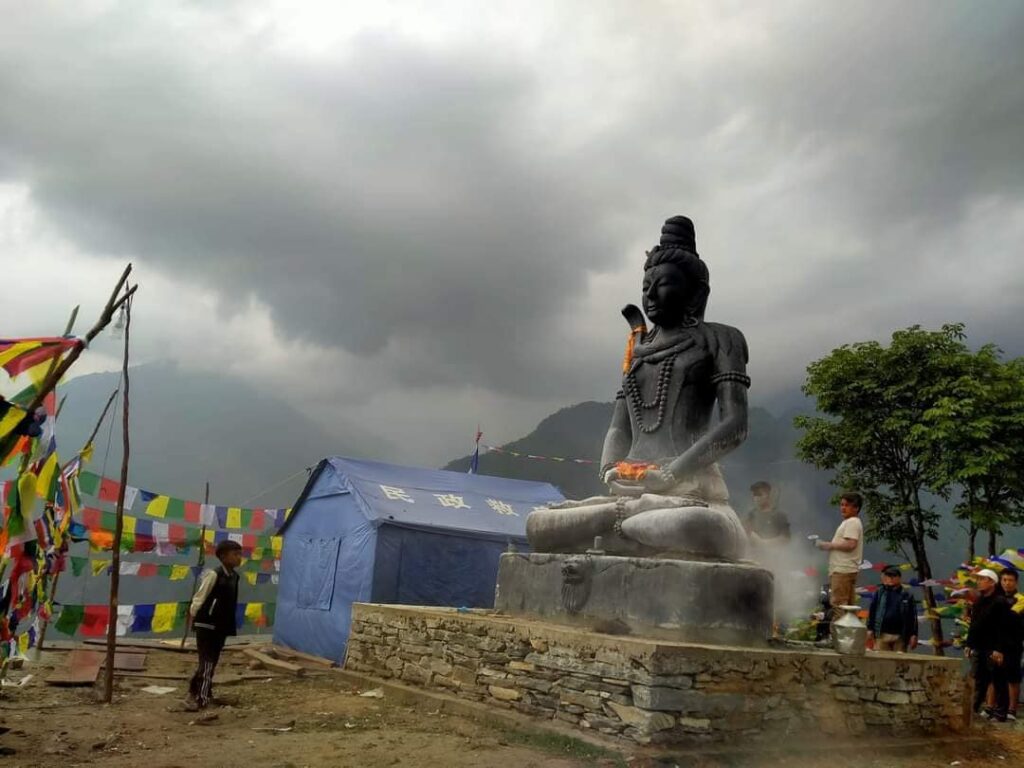
As one travels southwards, the landscapes mellow down into lush subtropical plains, crafting a picturesque juxtaposition that is quintessentially Dhading. These lower regions are the lifeblood of the district’s agricultural heritage, boasting fertile soils that paint the land with a multitude of crops, from rice and maize to millet and wheat, adding to the scenic beauty.
The district’s geographical splendour is not just for show. It plays a significant role in its cultural mosaic, shaping the lifestyles, traditions, and livelihoods of its residents. Whether it’s the shepherd tending his sheep in the highland pastures or the farmer ploughing his fields in the lowlands, each individual in Dhading has a unique story to tell, a story that is deeply intertwined with the land they call home.
What truly sets Dhading apart, however, is its harmonious blend of diverse climatic zones. Despite its compact size, it houses climates ranging from subtropical to alpine, offering a unique cross-section of Nepal’s diverse ecology. This climate diversity translates into a rich tapestry of flora and fauna, making Dhading a paradise for nature enthusiasts and explorers.
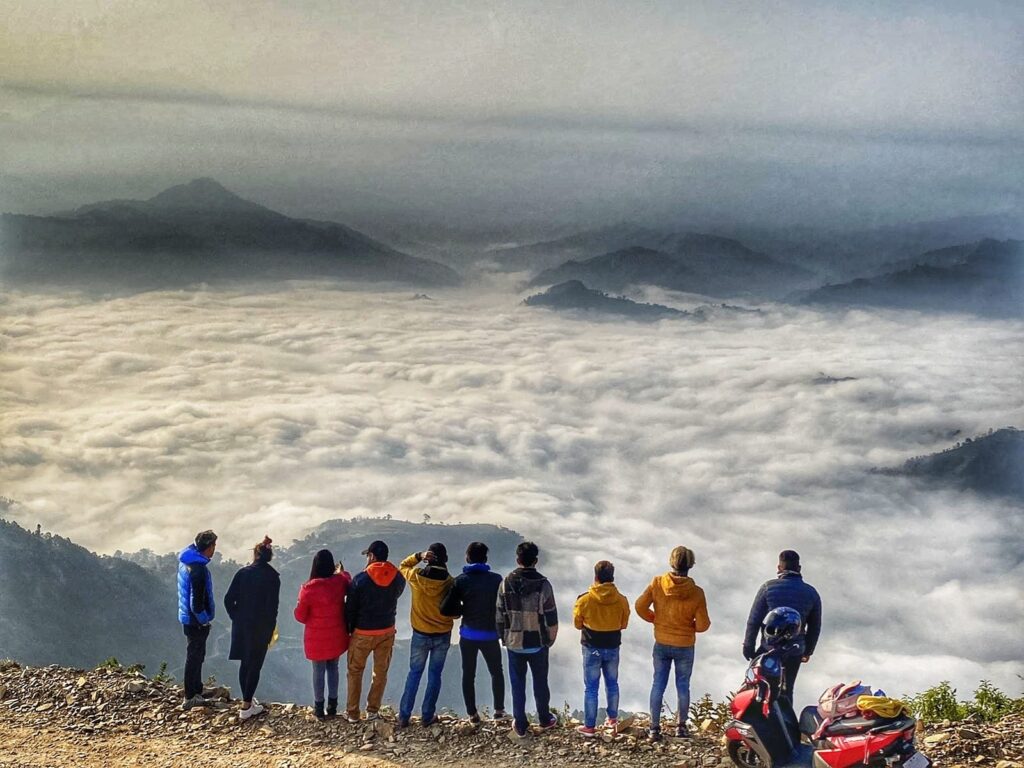
In a nutshell, Dhading District is a symphony of nature’s best elements, an alluring mix of geography and culture, and a testament to Nepal’s enduring charm. It is a place that promises uniquely enriching experiences to every visitor, compelling them to come back for more.
Dhading: A Mosaic of Cultures
The diversity of Dhading extends beyond its physical attributes, reaching deep into its social fabric. The district, with its broad spectrum of ethnic groups and languages, forms an incredible tapestry that truly embodies the spirit of Nepal’s multicultural identity. The languages spoken here, including Nepali, Tamang, and Newari, each add their unique threads to this tapestry, creating a linguistic diversity that is as enriching as it is fascinating.

Among the several ethnic groups that inhabit Dhading, the Brahmins and Chhetris are prominent, their presence painting a vibrant picture of Nepal’s complex caste system. Newars and Tamangs, too, form significant chunks of the population, their distinct cultures and traditions contributing generously to Dhading’s eclectic charm. The presence of these diverse communities provides a fascinating glimpse into the social structure of Nepal, allowing visitors to immerse themselves in a deep cultural experience.
When it comes to education, Dhading shines with a commitment that stands tall against its challenges. A literacy rate that hovers around 60% in this rural district is a testament to its resilient pursuit of knowledge. Schools are scattered across its wide geography, some nestled in the highlands, others dotted across the lowland plains. Each institution, whether small or large, plays a pivotal role in shaping the district’s future, instilling a love for learning among its residents.
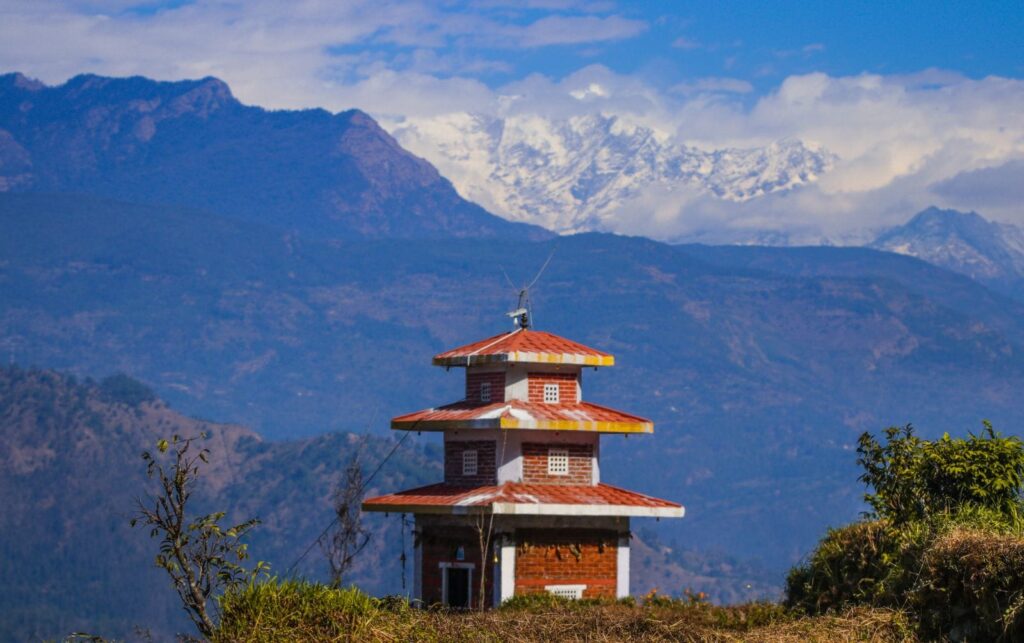
Religion, too, is an integral part of Dhading’s cultural identity. Hinduism is the dominant faith, its echoes resounding in the chants of the temples, the vibrant festivals, and the daily routines of its people. However, the harmony between different faiths is one of the standout features of this district. Buddhism coexists peacefully with Hinduism, its influence manifested in the numerous monasteries, the prayer flags fluttering in the wind, and the serene Buddhist chants that meld into Dhading’s soundscape. This religious harmony mirrors Nepal’s broader ethos, one that fosters unity amid diversity.
In essence, Dhading is not merely a district on a map, but a living, breathing entity that encapsulates the cultural vibrancy of Nepal. Its ethnic diversity, linguistic variety, commitment to education, and religious harmony are the threads that weave together to create a rich social fabric, one that is ready to welcome anyone willing to experience and appreciate its depth.
The Administrative Pulse of Dhading
At the heart of Dhading district lies Dhading Besi, its administrative and cultural capital. More than just the district’s headquarters, Dhading Besi is a pulsating hub of activity, showcasing a captivating blend of traditional life and modern amenities. The vibrant town, with its bustling markets, beautiful temples, and schools, pulses with the rhythm of local life. Yet, amidst this busy urban facade, the spirit of Dhading’s traditional ethos remains deeply ingrained, providing a rare glimpse into the authentic Nepalese lifestyle.

Dhading Besi is also an important infrastructural center, hosting several governmental and non-governmental offices, healthcare facilities, and educational institutions. Its strategic location, excellent connectivity with other parts of the district, and well-established amenities make it an essential pivot around which the district’s administrative, economic, and social activities revolve.
Dhading’s administrative framework is intricate and well-organized, divided into 13 local government units. This division allows for more efficient and localized administration, ensuring that each part of the district receives the attention and resources it requires. These units include Dhunibeshi, a buzzing commercial town; Nilkantha Municipality, the district’s urban hub, and Khaniyabas, Gajuri, Galchhi, Gangajamuna, Jwalamukhi, Tharke, Netrawati Dabjong, Rubi Valley, Siddhalek, Benighat and Tripurasundari Rural Municipality known for its scenic beauty and warm hospitality, among others.

Each local government unit in Dhading possesses a unique charm and character that reflects the district’s diverse socio-cultural fabric. From bustling towns with thriving markets to serene rural municipalities surrounded by lush landscapes, Dhading’s administrative divisions offer a wide array of experiences. They not only perform their administrative functions but also act as cultural incubators, each nurturing and preserving its unique traditions and practices while adapting to the changing times.
The administrative heart of Dhading is more than just a network of offices and bureaucratic structures; it is a living, evolving entity that fuels the district’s growth and development. It embodies the spirit of unity in diversity, with each local government contributing its unique strengths towards a common goal – the progress and prosperity of Dhading.
The Unfolding Tapestry of Dhading’s Attractions
Like a carefully woven tapestry, Dhading unravels to reveal a wealth of attractions that cater to all types of explorers, from the adventurous at heart to seekers of tranquility, culture enthusiasts to nature lovers. It’s a district that invites you to delve deeper, promising a new discovery at every turn.
For the adventurers and nature lovers, the Ganga Jamuna Waterfall offers a sight to behold. Located amidst the picturesque landscape, the twin waterfalls cascade down from a height, their thunderous roar a harmonious symphony that resonates with the surrounding wilderness. During the monsoon, the waterfalls roar with a renewed vigor, creating a mesmerizing spectacle. A trek to this natural wonder takes you through verdant forests and terraced fields, rewarding you with stunning vistas along the way.
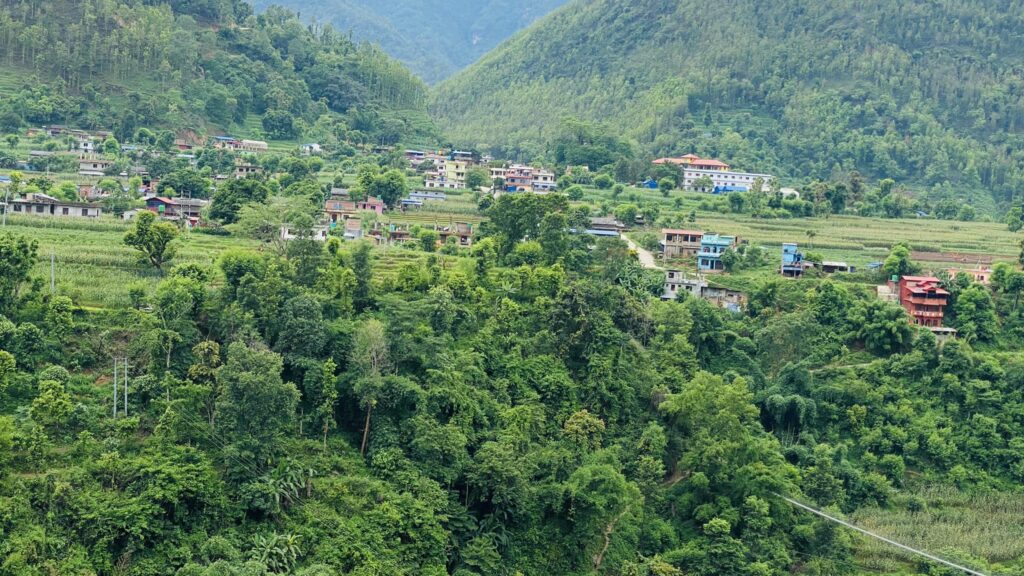
Siddha Cave, on the other hand, calls out to the spiritually inclined and the curious explorers. This sacred cavern, one of the largest in Nepal, boasts fascinating stalactite and stalagmite formations that have stood the test of time. It is also a place of religious significance, with devotees flocking here during special occasions. The cave’s mystical aura, coupled with its natural beauty, makes it a must-visit attraction in Dhading.

For those seeking serenity amid nature, the Ruby Valley offers a perfect escape. Named after the precious stone found here, the valley enchants with its tranquil beauty. Blanketed with emerald green fields and dotted with quaint villages, it offers a slice of rural Nepali life against the backdrop of towering mountains. The valley is also a trekker’s paradise, with several trails winding through it, each promising awe-inspiring panoramas.
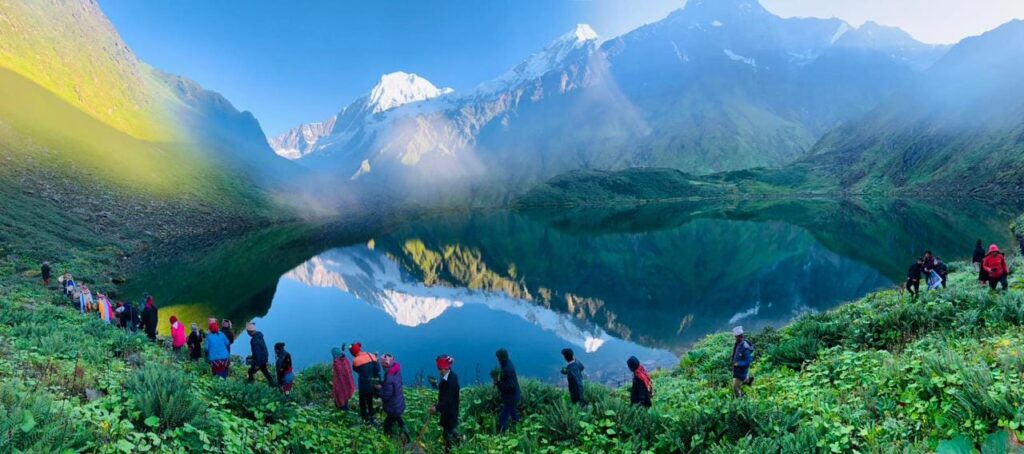
In essence, Dhading is a treasure trove of experiences and attractions. Its varied landscapes, cultural hotspots, and natural wonders make it an unmissable destination on Nepal’s tourism map. Dhading invites you to take the road less traveled and discover its hidden gems, assuring an unforgettable journey through its charming territories.
A Journey of Discovery: My Personal Dhading Story
The locals, warm and friendly, welcomed me with open hearts, their smiles as radiant as the Nepalese sun. Exchanging greetings with them, hearing their stories, and witnessing their simple yet fulfilling lives, was truly enriching. They invited me into their homes, served me traditional meals, and shared tales that added a unique flavor to my journey. I was not just a tourist here; I felt like a part of their community.
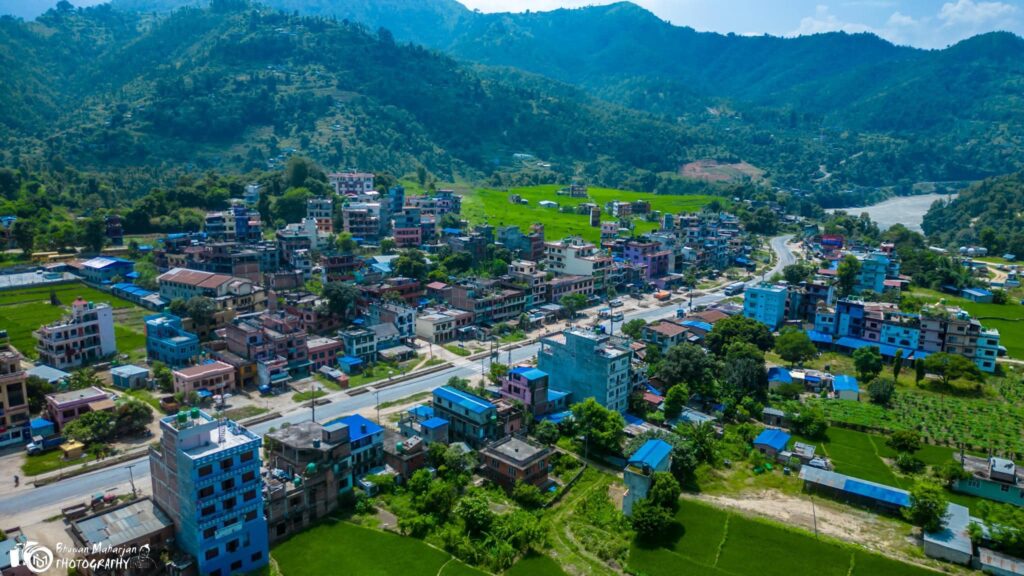
My visit to Dhading was more than just a trip; it was a journey of self-discovery and connection. It left me with a deep sense of peace, a renewed appreciation for nature’s wonders, and a vibrant palette of cultural experiences. Each moment spent here was a brushstroke on the canvas of my memory, painting a picture I will cherish forever.
In conclusion, Dhading is not just a district, it’s a portal to an unforgettable journey. Each visit uncovers a new layer of its charm, making you yearn for more. So, pack your bags and prepare to fall in love with Dhading’s delightful offering!
FAQs about Dhading
The ideal time to visit Dhading is from September to November when the weather is pleasant, and the skies offer clear views of the surrounding landscapes.
Dhading is accessible by road from Kathmandu, taking about 4-5 hours.
Nepali is the most commonly spoken language, followed by Tamang and Newari.
Dhading is known for its natural beauty, cultural heritage, and being the only district in Nepal that connects the capital city with the national highway.
Yes, there are several accommodations available in Dhading ranging from budget guesthouses to more luxurious hotels.
More…
If you know any more places where we can visit or any other information then feel free to comment of message us.
To read about different places visit thesandeshneupane.com you can find article in Nepali language here.
Watch videos of different places on YouTube channel named as THE SANDESH NEUPANE or click here.
All the photo copyright to the respective owner. For any querry or anything related to copyright mail me with proof at sandesh@thesandeshneupane.com or admin@thesandeshneupane.com .






